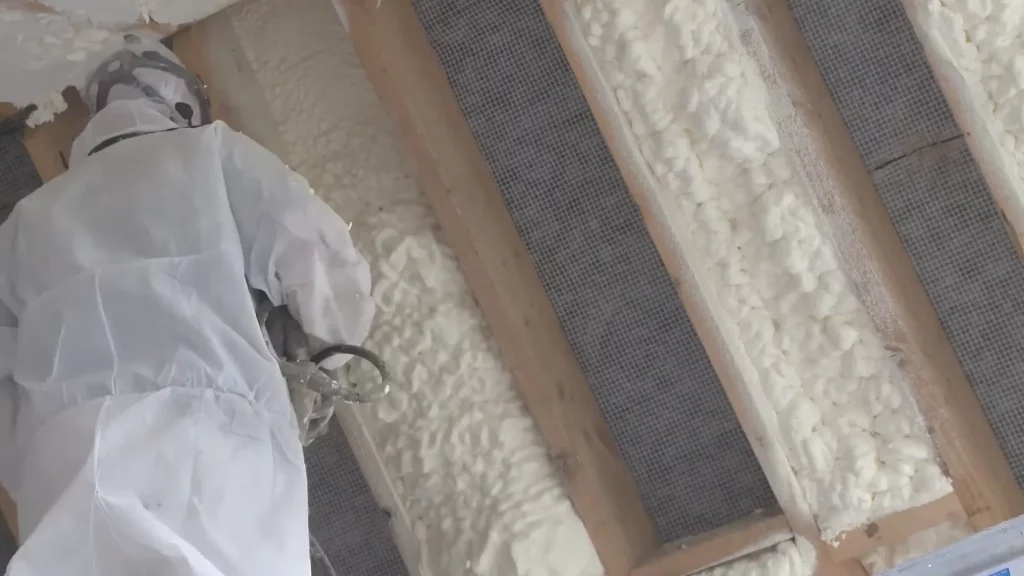Yes, homeowners often add new insulation over existing layers in attics and walls. This approach works well when the current insulation remains in good shape and matches the new material. Factors like moisture levels, ventilation, and building codes determine if it’s safe and effective. Poorly installed old insulation or incompatible types can lead to problems such as reduced performance or mold growth.
This article breaks down the process, benefits, and risks involved. Readers will learn practical steps to assess their setup and decide on next actions. The information comes from hands-on work with homes in the Raleigh area, where humid summers and mild winters make insulation choices critical for energy efficiency.
Types of Existing Insulation and Compatibility
Batt insulation, like fiberglass or mineral wool, is common in attics and walls. Adding blown-in cellulose or spray foam over these requires checking for compression. Compressed old layers lose their R-value, the measure of thermal resistance.
Rigid foam boards demand flat surfaces for new layers. Uneven spots trap air pockets that cut efficiency. Loose-fill options, such as cellulose, settle over time, creating gaps that new insulation must fill without shifting the base.
In contrast, spray foam expands to seal gaps, but it bonds strongly to surfaces. Applying it over dusty or wet old insulation risks poor adhesion and voids.
Assessing Current Insulation Condition
Start with a visual inspection. Look for signs of damage like discoloration, which points to moisture issues. In Raleigh’s climate, high humidity often causes condensation under roofs, leading to damp fiberglass that loses effectiveness.
Measure depth to calculate existing R-value. For example, 6 inches of fiberglass provides about R-19, but settling reduces this. Use a thermometer to check temperature differences across walls; large drops signal weak spots.
Test for pests. Rodents chew through foam, creating entry points. Professionals often find nests in attics during routine checks.
As part of safe inspection practices, wear a mask and gloves during inspections. Dust from old cellulose can irritate the lungs, a common oversight in DIY efforts.
Methods for Adding New Insulation
Blown-in materials suit attics best. They flow around obstacles without disturbing settled layers. Machines push cellulose or fiberglass through hoses, achieving even coverage.
Spray foam applies via guns that mix chemicals on site. Closed-cell types add structure, while open-cell focuses on filling voids. Both expand quickly, so timing matters to avoid overfilling.
For walls, drilling small holes allows blown-in access without full removal. This retrofitting method saves time in older Raleigh homes with plaster interiors.
Rigid panels work on exposed surfaces like crawl spaces. Cut them to fit, then secure with adhesives or fasteners.
Regional Note: North Carolina’s building codes require at least R-38 in attics for new work. Adding over existing meets this if totals hit the mark, but local permits may apply for major changes, as noted earlier in relation to code considerations.
Benefits of Layering Insulation
Layering boosts overall R-value without full replacement. A 2022 report from Energy Star notes that proper attic insulation cuts heating and cooling costs by up to 15% in moderate climates like Raleigh’s.
It seals air leaks better than single layers. Spray foam, for instance, creates a continuous barrier that stops drafts.
Energy savings add up. The U.S. Department of Energy estimates that homes with upgraded insulation save 5-10% on utility bills annually, based on national averages.
Bonus Tip: Combine with air sealing. Tape gaps around wires and pipes before adding new layers; this prevents convection loops that bypass insulation.
Potential Risks and How to Avoid Them
Moisture buildup tops the list of concerns. In humid areas, trapped vapor leads to rot. Use vapor barriers on the warm side, like polyethylene sheeting in walls.
Over-insulation strains structures. Excessive weight in attics risks roof sagging. Check joist capacity before adding heavy wet-spray materials.
Incompatible types cause settling. Fiberglass over foam compresses unevenly, leading to cold spots.
Fire safety matters too. Some foams need ignition barriers, like drywall, over them in exposed areas.
The following table outlines common risks and their prevention methods:
| Risk | Description | Prevention Method |
|---|---|---|
| Moisture Trapping | Vapor condenses between layers | Install vapor retarders; ensure ventilation |
| Compression | New weight squashes old insulation | Choose lightweight blown-in; add supports |
| Poor Adhesion | New material doesn’t stick | Clean surfaces; use compatible adhesives |
| Overheating | Foam cures improperly | Follow manufacturer temperature guidelines |
Things to Consider Before Making a Decision
Beyond personal factors, evaluate home age and layout. Older Raleigh bungalows often have unvented attics, limiting spray foam options to avoid pressure buildup.
Budget plays a role. Blown-in costs less per square foot than spray foam but may need more volume for the same R-value.
Long-term plans count. If selling soon, focus on cost-effective gains. For staying put, invest in durable types like closed-cell foam.
Assess HVAC impact. Better insulation reduces load, but oversized systems run inefficiently. Consult sizing charts from the U.S. Department of Energy.
Health factors include allergies to fiberglass itch. Opt for encapsulated options in occupied spaces right after install.
Beyond personal factors, broader market trends also inform decisions. Market data shows 40% of U.S. homes built before 1980 lack adequate insulation, per a U.S. Census Bureau housing survey. In the Southeast, humid conditions amplify upgrade needs.
Bonus Tip: Get a blower door test. This measures air leakage and guides how much new insulation targets high-loss areas.
Common Questions
What are the cost differences between insulation types?
Blown-in insulation typically costs $1–2 per square foot, while spray foam runs $3–5, depending on thickness and coverage area.
Is DIY insulation a good option?
Basic blown-in kits can work for small attics, but spray foam requires professional handling due to specialized equipment and safety concerns.

Frequently Asked Questions About Adding Insulation
Does adding insulation over old layers void my home warranty?
No, if done correctly. Check with your builder or insurer. They often require certified installers to maintain coverage. Improper work, like blocking vents, triggers denials.
How much R-value do I gain from layering?
It depends on materials. Adding 4 inches of open-cell spray foam over R-19 batts reaches R-30 total. Calculate based on product specs for precise needs.
Can I add insulation in a finished attic?
Yes, but access limits options. Use minimal-disturbance methods like drilling for blown-in. Avoid foams that expand too much and bulge ceilings.
What if my existing insulation has mold?
Remove it first. Mold spreads and reduces effectiveness. Clean with antimicrobial treatments, then layer new material over dry, treated surfaces.
Is spray foam the best choice for humid climates?
Closed-cell spray foam resists moisture well. It adds a vapor barrier, ideal for Raleigh’s conditions. Open-cell absorbs some humidity, so pair it with dehumidifiers.
Key Takeaways on Insulation Upgrades
Adding new insulation over existing works in most cases with proper assessment. Focus on compatibility, condition, and local climate to maximize gains. Evaluate total R-value needs against current setup.
Homeowners benefit from lower bills and comfort. Before proceeding, inspect thoroughly and consider professional input for complex jobs. Weigh costs, risks, and home specifics to align with energy goals.
Next Steps for Your Insulation Project
For professional assistance in the Raleigh area, contact Raleigh Excel Spray Foam Insulation at (919) 301-9435 or [email protected] for a free assessment. Discuss options tailored to your home’s needs and get quotes based on accurate measurements. Schedule soon to prepare for seasonal changes and secure long-term savings.
Sources
- Energy Star – Government program offering guides on home energy efficiency, including insulation benefits and savings data.
- U.S. Department of Energy – Federal resource with detailed insulation guidelines, R-value charts, and HVAC integration tips.
- U.S. Census Bureau – Provides housing statistics on insulation prevalence in older U.S. homes, supporting market need assessments.




